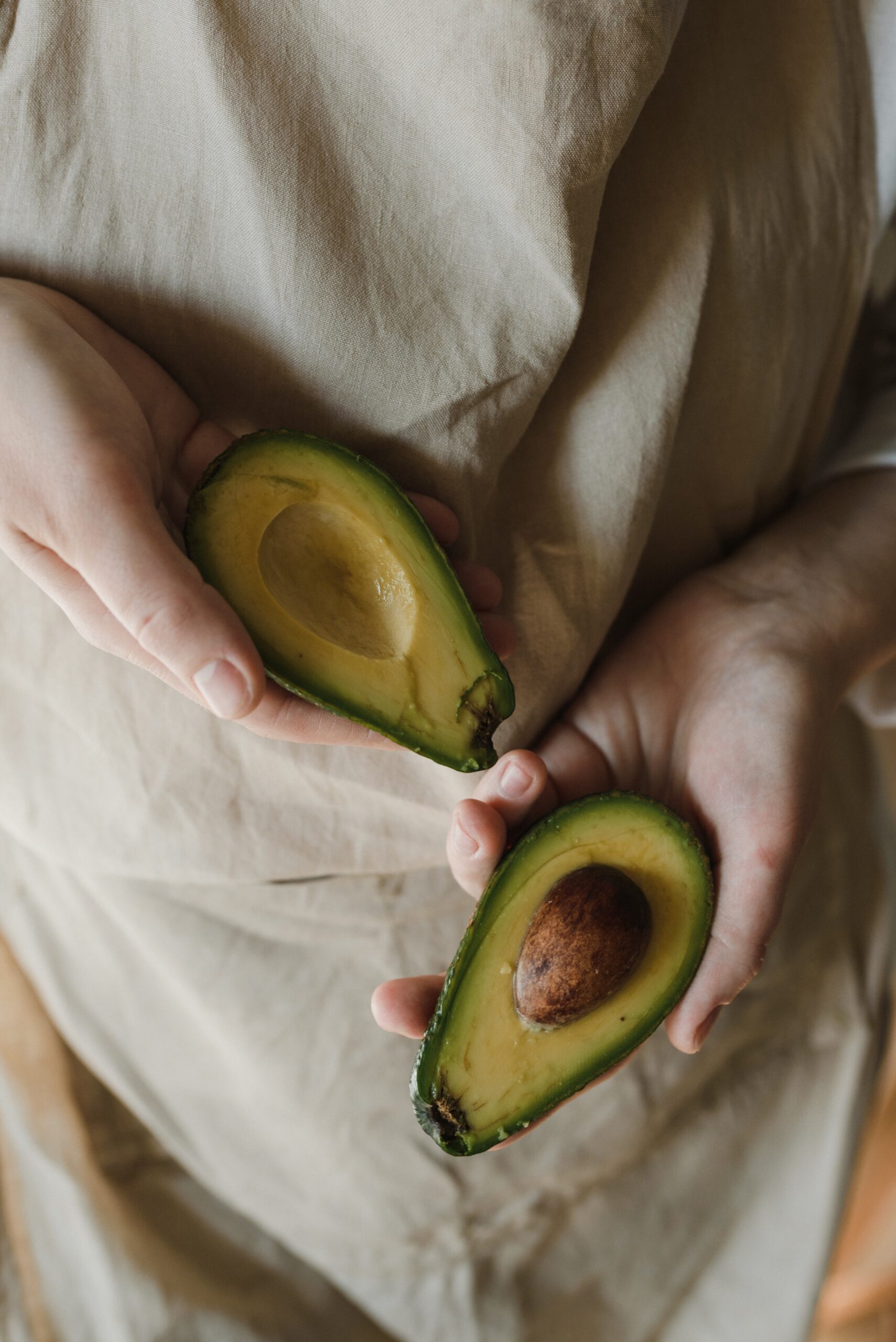Home > Female Body > Menstrual cycle > Top Follicular Phase Foods to Fuel Your Monthly Reset

 Written by
Stacy Miller
Written by
Stacy Miller

Your follicular phase starts on the first day of your period and ends on the day of ovulation, so it’s important to fuel your body during this time to give it the support it needs to thrive. Adding nutrient-dense follicular phase foods will help you feel great during this phase of your menstrual cycle. The problem is that many women don’t know what to eat during the follicular phase, so they don’t end up feeling their best. In this article, we’ll discuss follicular phase nutrition and its impact on your overall health. We’ll also provide a list of the top foods to eat during the follicular phase and how to easily incorporate them into your diet.
While it may not be the most fun part of the menstrual cycle, the follicular phase plays a key role in your reproductive health. As we mentioned, the follicular phase begins on the first day of your period and ends when ovulation starts. During this time, follicle-stimulating hormone or FSH causes your ovaries to begin growing follicles. One of these follicles will become dominant and will eventually release an egg. This process is called ovulation. Along with maturing an egg, your uterine lining begins thickening, preparing it to support a healthy pregnancy should conception occur.
Apart from menstruation, the follicular phase is a great time with moderate to high energy levels and positive mood. Menstruation can make you feel fatigued and cause cramps, bloating, headaches, and nausea. Knowing what to eat in the follicular phase will give your body the nutrition it needs to support energy levels and combat other common symptoms.
You should never underestimate the role nutrition plays in regulating your hormones and helping you feel your best. Eating the right vitamin-rich foods during the follicular phase can help reduce inflammation, balance blood sugar, combat stress, and maintain a healthy gut. Since your body is working extra hard maturing an egg, giving it an extra boost with follicular foods will help keep your system running smoothly.
The best foods for the follicular phase are full of antioxidants, vitamins like iron, and fatty acids. It’s even important to get plenty of healthy fats. You’ll want to make sure your nutrient intake comes from a variety of sources for optimal nutritional diversity. Here is a list of some of the top foods to eat in the follicular phase.
Seeds are an excellent follicular phase food, thanks to their high zinc and phytoestrogen content. Flax and pumpkin seeds, in particular, are recommended during the follicular phase as your body prepares for ovulation.
Vegetables should be a staple in any balanced diet, but they’re particularly good for follicular phase eating. During the first phase of your menstrual cycle, you’ll want to focus on iron-rich leafy greens like kale and spinach, along with cruciferous vegetables like Brussels sprouts, cauliflower, and broccoli. Iron in leafy greens combats anemia.
Vegetables high in healthy fats like avocados are also essential for hormone regulation and production, while fermented vegetables like sauerkraut and kimchi are great follicular phase foods to eat since they promote gut health.
Whole grains like brown rice, quinoa, and oats are beneficial foods to eat during your follicular phase since they help regulate your blood sugar and support energy levels. Complex carbs are a great source of energy and fiber, keeping you feeling great. There’s also some research suggesting that eating whole grains can have a positive impact on fertility by helping to regulate androgen and insulin production.
Like whole grains, legumes like beans, split peas, green lentils, and black-eyed peas help regulate your blood sugar and support sustained energy levels during the follicular phase. They are also an excellent source of complex carbohydrates.
Not only are berries delicious, but they’re a great addition to your follicular phase diet. They’re high in antioxidants, which can support and protect healthy follicle production and eggs. Their vitamin content helps them reduce inflammation and support the immune system. Raspberries, blueberries, and strawberries are great follicular phase breakfast options or for any other time of day.
Lean protein, like fish, turkey, and chicken, provides your body with the essential amino acids it needs to repair tissue and support muscle health, two key factors needed when preparing for ovulation. They also sustain energy levels, help balance hormones, and support egg development, which is crucial during the follicular phase.
Knowing which follicular phase foods to avoid and which to eat can be a challenge since there’s often conflicting information available. In general, eating a balanced diet and avoiding sugary, fried, and processed foods is great for your overall health. When searching for nutrition information, it’s important to stick to credible sources like government websites like the USDA or nutrition.gov and reputable organizations like the American Heart Association and the Academy of Nutrition and Dietetics.
Eating more follicular-friendly foods doesn’t have to be hard or complicated. These tips can make it easy to enjoy nutritious options.
No one wants to spend hours in the kitchen. Preparing ingredients or meals in advance, you can save time during busy weekdays and still enjoy homemade food without spending hours in the kitchen.
Nutritious eating doesn’t have to be complicated. A bowl of oatmeal with your favorite fruit for breakfast, a tuna wrap on a whole grain tortilla for lunch, and roast chicken and broccoli, and brown rice for dinner is easy and delicious. Keeping it simple will make eating a healthy diet sustainable.
One of the worst things you can do is restrict yourself too much during your follicular phase. If you’re craving chocolate, have some, but maybe swap the milk chocolate bar for 60% to 70% dark chocolate. Satisfying cravings will keep you from binging and make it easier to eat more nutrient-dense foods the majority of the time.
Knowing what to eat during your follicular phase will give your body the hormonal support it needs to work properly. Hormona is proud to offer the award-winning hormone tracker that’s revolutionizing women’s hormone health. The Hormona app provides comprehensive insights and tools to help you understand your body so you can feel your best.
Although possible, you’re more likely to feel hungry during the luteal phase than during the follicular phase due to lower levels of estradiol as well as experiencing nausea and fatigue.
While taking vitamins can help you with certain nutrient deficiencies, they’re not used specifically for any phase of the menstrual cycle.
There is no evidence showing that fasting during the follicular phase has a noticeable impact on follicular development or phase length.
Eating processed foods, sugar, and alcohol is not recommended during any phase of the cycle; the follicular phase is no exception, as these foods provide no hormonal support and can negatively impact your overall health.
The follicular phase starts on your period and this is the only time when you may not feel great. It’s common to experience fatigue, cramping, bloating, breast tenderness, and mood swings, which can all contribute to not feeling well. However, if you don’t feel well after your period without any reason, it may be a good reason to visit a doctor, as there are no physiological processes that should cause you to feel this way.


-


Dr Singh is the Medical Director of the Indiana Sleep Center. His research and clinical practice focuses on the myriad of sleep.

What is estrogen and why is it important? Estrogen is one of the main sex hormones responsible for menstrual cycle regulation. It prepares your uterus for pregnancy and affects breast tissue development. But it isn’t just your reproductive system that

Perimenopause and fertility: What you need to know After mid 40, many women start the transition to menopause, this stage is called perimenopause. This is the time when your hormones start to behave differently and fertility decreases. Whether you already

The role of hormones in perimenopause Throughout your menstrual cycle, you experience normal hormonal fluctuations that are responsible for proper bodily functions like ovulation and menstruation. However, once you enter perimenopause, your hormone fluctuations change. As ovaries become less responsive
Privacy Overview
| Cookie | Duration | Description |
|---|---|---|
| cookielawinfo-checkbox-analytics | 11 months | This cookie is set by GDPR Cookie Consent plugin. The cookie is used to store the user consent for the cookies in the category "Analytics". |
| cookielawinfo-checkbox-functional | 11 months | The cookie is set by GDPR cookie consent to record the user consent for the cookies in the category "Functional". |
| cookielawinfo-checkbox-necessary | 11 months | This cookie is set by GDPR Cookie Consent plugin. The cookies is used to store the user consent for the cookies in the category "Necessary". |
| cookielawinfo-checkbox-others | 11 months | This cookie is set by GDPR Cookie Consent plugin. The cookie is used to store the user consent for the cookies in the category "Other. |
| cookielawinfo-checkbox-performance | 11 months | This cookie is set by GDPR Cookie Consent plugin. The cookie is used to store the user consent for the cookies in the category "Performance". |
| viewed_cookie_policy | 11 months | The cookie is set by the GDPR Cookie Consent plugin and is used to store whether or not user has consented to the use of cookies. It does not store any personal data. |
